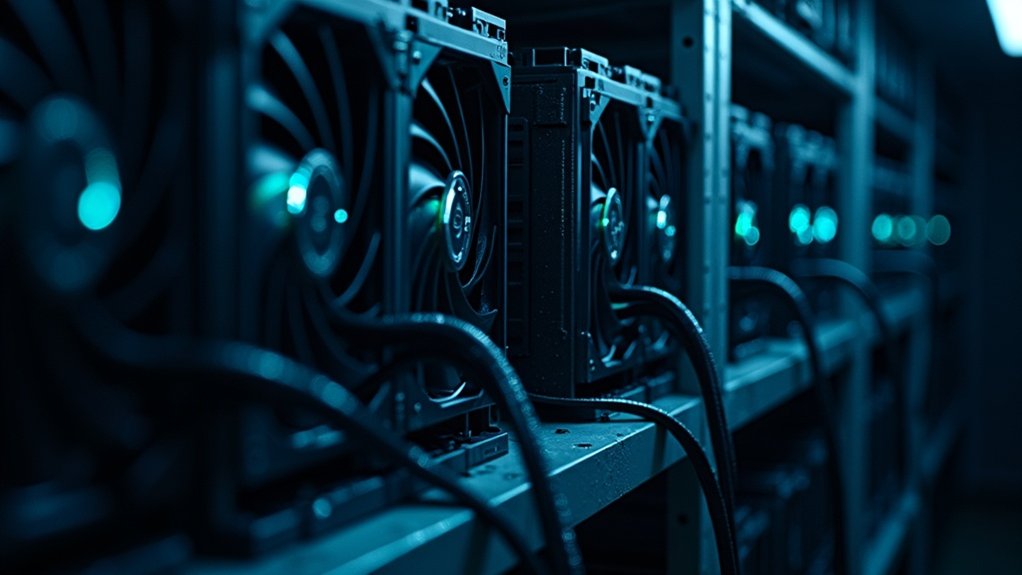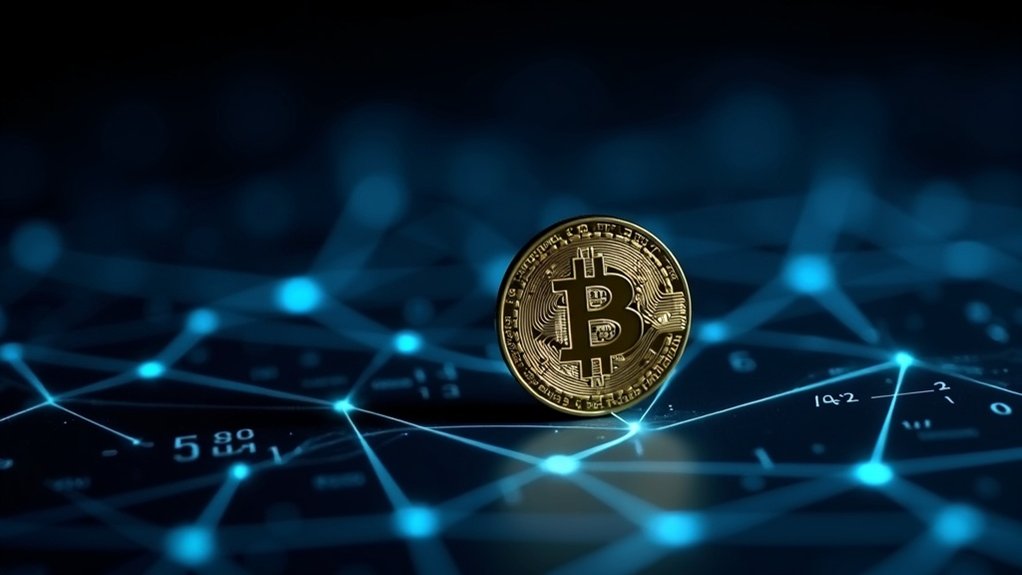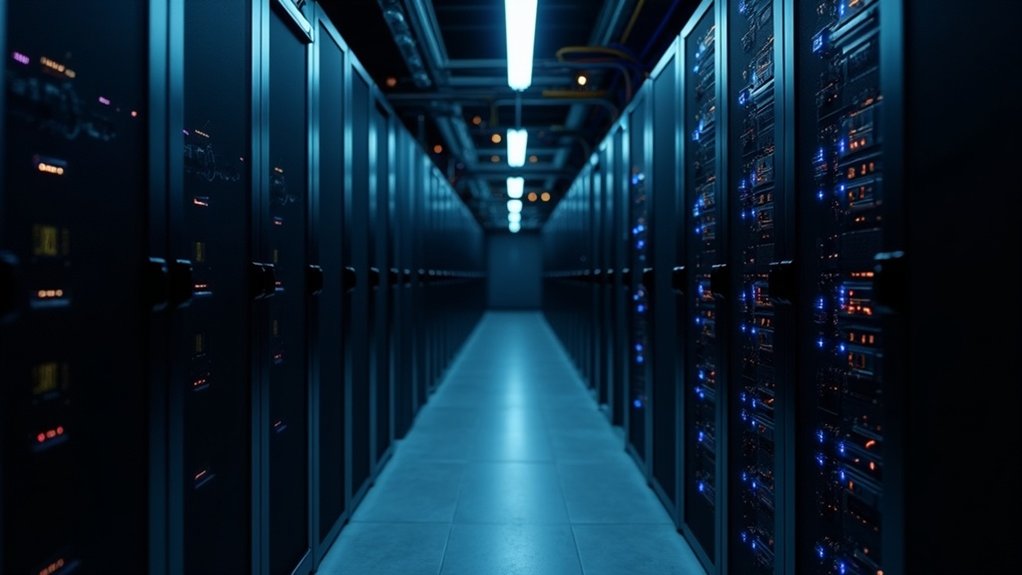Bitcoins are created through mining – a computational process where powerful computers solve complex math puzzles. Miners compete to find a special number (nonce) that generates a hash below a target threshold. It’s intense. The winner adds a new block to the blockchain and receives 6.25 newly minted bitcoins plus transaction fees. Mining requires specialized ASIC hardware and significant electricity. The system uses proof-of-work to maintain security without central oversight. The rabbit hole goes much deeper.
Where do those digital coins actually come from?
They don’t magically appear in digital wallets, that’s for sure.
Bitcoin creation happens through a process called mining—and no, it doesn’t involve pickaxes or hard hats.
It’s all computational.
Miners use powerful computers to solve complex mathematical puzzles based on the SHA-256 cryptographic hash function.
Sounds fancy, right? It is.
The process follows a Proof-of-Work system.
Miners burn electricity to solve mathematical riddles—whoever wins gets paid. That’s Proof-of-Work in a nutshell.
Miners race to find a specific hash value below a target threshold by combining block data with a variable called a nonce.
They basically guess billions of times until someone gets lucky.
Not exactly rocket science, but it requires serious computing power.
The winner gets newly minted bitcoins plus transaction fees. Sweet deal.
This competition helps maintain network integrity and security without central oversight.
Many miners join mining pools to increase their chances of earning rewards.
Today’s miners don’t mess around with regular computers.
They use specialized hardware called ASICs—Application-Specific Integrated Circuits.
These machines do one thing: solve SHA-256 puzzles, and they do it well.
GPUs and other equipment? Old news.
ASICs dominate the scene now.
They guzzle electricity like there’s no tomorrow, which explains the environmental concerns you’ve probably heard about.
A successful miner currently receives 3.125 Bitcoin per block as a reward for their computational efforts.
Every ten minutes or so, a miner somewhere finds a valid hash.
Boom—new block created.
The lucky miner receives a block reward, currently 6.25 bitcoins.
This reward halves approximately every four years, controlling inflation.
Bitcoin isn’t infinite.
There will only ever be 21 million of them. Scarcity by design.
Before being included in a block, transactions sit in what’s called a mempool.
Miners pick which transactions to include based on fees.
Want your transaction processed faster? Pay up.
It’s a simple economy.
The transactions form a Merkle tree, with the root included in the block header.
Each new block links to the previous one, creating an immutable chain.
That’s the blockchain—a permanent, transparent record of every bitcoin transaction ever made.
No takebacks. No erasing history.
Frequently Asked Questions
Is Bitcoin Mining Environmentally Friendly?
No, Bitcoin mining isn’t environmentally friendly.
It’s a power-hungry monster consuming more electricity than entire countries.
The numbers don’t lie: 85% of U.S. mining operations run on fossil fuels, spewing 86 megatons of CO2 annually.
Offsetting this would require planting 3.9 billion trees—an area the size of Denmark.
Plus, it guzzles water and creates air pollution.
The industry’s claims about renewable energy? Just 7% comes from solar and wind. Not exactly green.
How Much Profit Can I Make Mining Bitcoin?
Bitcoin mining profits vary wildly. In 2025, miners collectively earn about $600 million monthly, but that’s split among thousands.
Profitability depends on hardware costs ($2,000-$20,000 per machine), electricity prices (a major factor causing 7% profit drop since 2024), and mining difficulty (constantly increasing).
Average earnings are around $0.065 per terahash.
Unless you’ve got cheap electricity and serious capital for equipment, profits are slim.
The big operations dominate now. Small miners? Good luck competing.
Can I Mine Bitcoin on My Home Computer?
Technically yes, practically no.
Home computers lack the specialized power needed for profitable Bitcoin mining today.
ASICs dominate the game now – those $2,000-$17,000 specialized machines that crush regular PCs in mining capability.
Your laptop? Laughably outmatched.
Mining Bitcoin on a standard computer is basically an expensive educational experiment.
Some folks use software like NiceHash, but even then, it’s mostly renting out processing power.
The Bitcoin mining train left the station for regular computers years ago.
What Happens When All 21 Million Bitcoins Are Mined?
When all 21 million bitcoins are mined (around 2140), miners won’t receive block rewards anymore. They’ll rely solely on transaction fees.
Mining economics will fundamentally change. Security? That depends on whether fees provide enough incentive.
The network keeps running, obviously, but the financial model shifts completely. No more “new” bitcoins—just the circulation of existing ones.
Some worry about security implications. Others think the fee market will adapt. Nobody really knows for sure.
How Does Bitcoin Mining Difficulty Adjust Over Time?
Bitcoin’s mining difficulty adjusts every 2016 blocks—roughly two weeks.
Simple formula: if miners found blocks faster than expected, difficulty goes up. Too slow? It drops.
The system targets a steady 10-minute block time, no matter how many miners join or quit. Pretty clever, actually.
Adjustments are capped at 4x increases or 0.25x decreases to prevent wild swings.
This self-regulating mechanism keeps the network humming along, even when major disruptions hit.









